Prospects of Emu Farming in India

Aamir Suhail Khan , Jyoti Palod , Brijesh Singh and Navneet Fonia
1&4 MVSc scholar (Poultry Science), 2&3 Professor
Department of Livestock Production Management, College of Veterinary and Animal Sciences,
G.B.Pant University of Agriculture and Technology, Pantnagar- 263145, Uttarakhand,India
Poultry industry in India is one of the fastest growing livestock sector in the country and is heading towards scientific modernization. The contribution of this sector to agriculture and total Gross Domestic Product (GDP) during 2010-11 was 29.7 per cent and 4.07 per cent, respectively. Poultry industry in India, though one of the fastest growing segment of animal husbandry sector, uncertainty prevails in the mind of poultry entrepreneurs because of chronic and acute problems of high feeding cost, emerging and re-emerging diseases, vaccine failure and fluctuating market price of meat and eggs. Eruption of transmittable, zoonotic and communicable diseases to excess of heat or cold are the main threats to poultry industry which leads to massive deaths and sudden fall in production. All these conditions necessitate the poultry industry to be diversified with other species viz., duck, quail, turkey, emu, and ostrich. Out of these diversification Emu farming is emerging these days with two main purposes:
- The first purpose is to breed birds – to increase the emu population, because of the high profits that can be made by selling adult emus as breeding birds.
- The second purpose is to slaughter birds -to get the by-products like emu meat, emu oil, emu feathers, emu skin and emu nails.
Emu (Dromaius novaehollandiae) is a large flightless bird originated from Australia. It is the third biggest bird in the world after Ostrich and Cassowary. Emu is a tough and an exotic sturdy social bird which can thrive well in non-fertile land and has not been included in any of the schedules of wildlife (protection) act, 1972. Hence no permission from forest department and any other agencies are necessary for rearing and marketing of emu. Emu is reared commercially in many parts of the world, viz., Australia, China, USA, Peru, Saudi Arabia etc. for their meat, oil, skin and feathers which are of high economic value. Australian government in 1975 had started domesticating emu living in forests by establishing big farms, but the first commercial emu farming to produce emu meat, leather, oil was started in Western Australia in 1981 and the first slaughter occurred in 1990 (O’Malley, 2003). In India, emu farming was started as an entrepreneurship in 1996 with import of live birds from USA. A company named ‘Vijaya Ratites’ in Andhra Pradesh was the first to undertake the activity on a commercial scale and later the entire farm was sold to ‘Flightless Birds of India’ (FBI) in 1997. FBI is the foundation farm of the emu birds and the total strength of the birds in the country are derived either from the birds imported by them or from their progeny. Emu farming in India was initially concentrated in Southern States with usual importance given for breeding. Farmers bought 10 to 15 pairs from a big breeder and had an option of becoming a self sustained breeder to produce chicks for sale or an integrated farmer to sell hatching eggs back to the integrator. The products sale in India is yet to take shape due to lack of awareness and non-availability of sufficient emu population. The future of this industry will be diversified into emu farming for fattening and breeding. Emus raised for fattening will be fed with different rations so that they will gain body weight at the earliest and yield all the products suitably. The preferred age for fattening is less than 24 months and ideal is 12 months.
Emu farming in India is still in primitive stage and the activity is rapidly increasing in size and number, by spreading into many states including Andhra Pradesh, Maharastra, Tamilnadu, Kerala, Gujarat, Punjab, Manipur, Chandigarh, Orissa and Assam. This expansion is likely to continue in the coming years in many other states. Majority of the
existing emu farmers are rearing the birds simply to increase the number of birds further. Many small sized farms are emerging day by day but neither there is a census available nor any method been designed to account them so far. But, according to Indian Emu Association of India there are around 2000 farms with six lakhs birds in the country.
Emu provides different products of economical value. The prime cuts of emu meat can be ready for sale to restaurants, residential orders, worldwide markets and in the future, shipment to supermarkets. Emu fat is rendered to produce oil, which has dietary, therapeutic (anti-inflammatory) and cosmetic value (Rao, 2004). Emu oil is found to be more cosmetically acceptable with better skin penetration compared to mineral oil (Zemtov et al., 1996). Additionally, the medical industry uses the oil for therapeutic rubbing oil, skin and facial moisturizing lotions and medical applications used for treating the skin of burn victims.
Emu skin has a similar tensile extensibility to ostrich skin and a rigidity value comparable to pig skin (Hoven, 2002). Emu skin is fine and strong, leg skin is of distinctive pattern, hence highly valued (Rao, 2004). Emu leather is well suited for embellishing designer apparel, boots, wallets, handbags and many other accessories. The feathers of the emu birds are double quills, attractive and velvety to touch and they are in demand in the fashion, art and craft industries.
Zoological classification of Emu is as under
| Kingdom | Animalia |
| Phylum | Chordata |
| Sub phylum | Vertebrata |
|
Class Order |
Aves Struthioniformes |
| Family | Ratite |
| Genus | Dromaius |
| Species |
novaehollainde |
Characteristic features of Emu
Height at birth 8-10 inches
Adult height 5-6 feet tall
Adult weight 100-140 pounds
Colour Black and Brown
Temperament Friendly and docile
Lifespan 30 years (approx)
Breeding method Mated in pairs
Productive years up to 25 years
Eggs per year 10 to 20 eggs in the first breeding season, gradually increases up to 20-30 eggs in subsequent breeding seasons
Age at slaughter 16-18 months
Natural food of emu are insects, leaves of plant and forages, different grasses, also eats different kinds of vegetables and fruits like carrot, cucumber, papaya etc. Emu chicks weigh about 370 – 450 g (about 67% of egg weight). For the first 14 weeks or till attaining standard body weight of 10kg emu chicks are fed with starter mash. Birds are fed with grower mash till their 34 weeks or 25 kg body weight. Finisher ration is offered from 35 weeks age to slaughter or up to 12 – 18 months age. Emu birds attain sexual maturity at 18 – 24 months age. First egg is laid around two and half years of age. Eggs are laid during October to February, particularly in cooler days of the year.
Physical features of Emu:
Emu chicks when hatch out have body stripes similar to squirrel, later as they grow after three months they lose the stripes to turn into brownish black feathers. Adult emu is a large bird up to 6 ft ht. with long neck and small naked head. Adult usually weighs 45 to 60 kgs. Legs are long and covered by scaly skin and it is tri ductile (three toes in the leg), entire body is covered by long feathers except part of the neck.
Sex differentiation:
Phenotypically emus look similar in both sexes. However, sexing is done on day old, based on feather sexing, vent sexing by identifying male organ and sound differentiation on maturity. Identification of emus is done usually by painting different colours on the legs, leg strips and micro chipping. Male emu after maturity makes grunting sound and female makes drumming sound.
Breeding of Emu:
Emus attain sexual maturity by 18 to 24 months. Breeding occurs during winter season (October to February in India). They are monogamous indicating one male for one female. In nature, the female mates with the male during breeding season and gives a clutch of eggs. Later, male sits for brooding on these eggs for a period of 52 days without food and water. However, the female continues to breed with new partners during the whole breeding season. The chicks hatched out follow the male emu rather than the female.
In commercial farming emus are paired in separate enclosures after maturity depending on the compatibility of the pair. Emu generally gives eggs during evening between 5.30 to 7.00 p.m. Each adult emu after three years can give an average egg production of 30 eggs during breeding season between October to February.
Hatching of Emu eggs:
Emu eggs are emerald green in colour weighing about 600 to 800 grams. The incubation period in emu is about 52 days. Eggs are collected on regular basis and are stored in a cooler temperature of 600F maximum up to one week. Later they are set in incubator machines which are specially designed to hold emu eggs with a dry bulb temperature of about 960 to 970 F and wet bulb temperature of about 780 to 800F (about 43% relative humidity) up to 48th day, with regular turning mechanism every one hour. From 49th day, the eggs are shifted to hatcher, wherein till 52nd day they are kept. Emu chicks hatch out on 52nd day naturally, sometimes assisted hatch is also carried out manually by helping the chick to come out by opening the shell at the head and toe positions. The normal hatchability is about 80%.
Chick Management:
Emu chicks weigh about 370 to 450 grams ( about 67% of the egg weight). For the first 48 to 72 hours, emu chicks are restricted to Hatcher itself for absorption of egg yolk and proper drying. The brooding shed is prepared well in advance with thorough cleaning and disinfection and flooring covered with gunny bags to prevent slipping of legs of young chicks. Emu chicks have long legs and are very active, slippery flooring will make emu chicks to have hip dislocation resulting in irreparable damage. A set of brooder is arranged for about 25 to 40 chicks giving four sq.ft. per chick for first three weeks. Brooding temperature of 900 F is provided for the first ten days and 850 F till three to four weeks. Feed and water are provided ad lib and a brooder guard of 2.5ft height is placed. Feed starter mash for first 8 weeks. Provide sufficient run space for the chicks to have healthy life. Hence, floor space of 40ft x 30 ft is required for about 40 chicks with outdoor space.
Grower Management:
As emu chicks grow they require bigger size of waterers and feeders and increased floor space for run. Grower mash is fed till 34 weeks of age. 10% greens can be offered, de-worming of the birds is done once with broad spectrum anthelmatic /ivermectin and vaccination with R2B at 8th week and repeated at 40th week. 40ft x100 ft space is provided for 40 birds.
Breeder Management:
Emu birds are seasonal layers and monogamous, they require different nutritional requirements which are varied during breeding season. A pre breeder ration with high protein and micro nutrients is given to prepare for breeding. During breeding the feed consumption is reduced to fifty percent. After breeding maintenance ration is given with low protein and low energy.
Housing and Feeding of Adult Emus:
Emus are reared in open paddocks which have chain link fencing of 2×2 or 3×3 enclosure with 2 ft. concrete wall construction , on this chain link , mesh of 6 ft. ht. is erected. Night shelter is optional with usual asbestos sheet roofing of 6 to 8 ft. Emus need balanced diet for their proper growth and reproduction. Feed alone accounts for 60-70% of the production cost, hence least cost rations improve the margin of returns over feeding. In commercial farms, feed intake per emu breeding pair per annum varied from 394-632 kg with a mean of 527kg. Feeding is given in feed troughs which are usually hung on the fence and water is given in specially designed water tank or troughs with good drainage. Feeding is done twice daily and water is provided ad lib.
Health care and management:
Ratite birds are generally sturdy and live long (80% livability). Mortality and health problems in emus are mainly in chicks and juveniles. These include starvation, malnutrition, intestinal obstruction, leg abnormalities, coli infections and clostridial infections. The main causes are improper brooding or nutrition, stress, improper handling and genetic disorders. Other diseases reported are rhinitis, candidiasis, salmonellosis, aspergillosis, coccidiosis, lice and ascarid infestations. Ivermectin can be given to prevent external and internal worms at 1 month interval beginning at 1 month of age. In emu, enteritis and viral eastern equine encephalomyelitis (EEE) have been reported. In India, so far few outbreaks of Ranikhet disease have been recorded based on gross lesions but not confirmed. However, the birds vaccinated for R.D. at the age of 1 (lasota), 4 (lasota booster) weeks; 8, 15 and 40 weeks by mukteshwar strain had better immunity ( Rao, 2004).
Products of Emu
Various products of economic importance obtained from emu are as under:
- Emu meat :
It is about 98% fat free red meat, which is similar in look to other red meats viz., beef, mutton, deer meat etc. Emu meat is rich in iron and vitamin C. The tenderness and texture of Emu meat enables it to be fit for preparations which are lightly grilled and pan fried, since emu meat is low in fat, it loses moisture quickly and is best under moist heat cooking.
Table 1 Composition of cooked Emu, Beef, Pork and Chicken
| Composition | Emu | Beef | Pork | Chicken |
| Moisture (%) | 63.1 | 59.5 | 60.7 | 63.1 |
| Protein (%) | 33.0 |
28.6 |
28.6 | 27.4 |
| Fat (%) | 2.3 |
9.6 |
9.8 | 9.7 |
| Ash (%) |
1.3 |
1.2 | 1.4 | 1.0 |
| Energy(Kg Cal/85g) | 130 | 178 |
178 |
174 |
| Iron(mg/85g) | 6.0 | 2.1 | 0.8 | 1.1 |
| Vitamin B-12(micron gm/85g) | 1.96 | 1.70 | 0.61 | 0.27 |
| Thiamin(mg/85g) | 0.36 | 0.08 | 0.78 | 0.06 |
| Vitamin(IU/85g) | 8.6 | 0.0 | 6.0 | 61.2 |
- Emu Oil:
Emu oil is semi solid white mass, which is generally located all along back of bird, but when it is processed and refined it is a clear liquid. Emu oil fatty acid composition is almost similar to human skin, which makes it to have high permeability when applied on to human skin. This property of high permeability is made use for delivering specific drug molecules for treatment of various skin condition as:
- Anti-inflammatory
- Moisturising
- Cholesterol Reducer
- Bacteriostatic
- Penetration Enhancer
- Significant epidermal proliferators
- Non- Comedogenic
- Significant wound healer
- Significantly reduces recent keloid scarring
- Faster healer of burn with less pain and scarring
- Anti-Arthritic
- Excellent Emulsifier
- The bird is able to see up to a distance of 10 meters and its eyes are being used to replace damaged corneas in human beings.
- Emu Skin:
Emu skin is of high quality with usual yield of about 6 to 8 sq.ft. per bird, which is used in preparation of leather products including apparels. The leg skin is very unique and with scales similar to crocodile skin and is being used in protective coverings for knives, swords and shoe top etc. Emu skin is very soft it can take up any colour and hence can be decorated with a variety of colours. Emu skin can fetch handsome money in international market.
- Emu feathers:
Emu feathers have double rafts with sub branching , the down feathers are soft and are being used in preparation of brushes specifically used in cleaning hard ware and circuits of electronic goods including computers.
- Emu eggs and Toe nails:
The unfertilized eggs which are emerald green are cleaned and used in crafting antique mementos for sale with different carving on the shell. Emu nails are also been used as key chains, pendants in necklaces.
Opportunity of Emu Farming in India
In India, chicken is the most popular of the poultry species, followed by ducks and quails. Of late, we need to diversify to other species of poultry in order to reap more profits. Emu is a social bird with dark whitish complexion. The birds live in groups and can thrive under varying climatic conditions ranging 0° C to 52° C. These birds are omnivorous and eat leaves, vegetables, fruits, insects, worms. They can be fed modified poultry feed. At present there are four Emu Associatison in India. They are – at Hyderabad as Indian Emu Association”, Mumbai – “National Emu Assocation”. These two associations are working at all India level. And in Maharastra level at Baramati in the name of “Maha Emu Association” and another at Pune in the name “Emu Farmer Association”. The experience of the Association in these states has been encouraging.
Scope & Potential
Although emu farming offers great scope and potential because of its supplementary income, additional employment and simplicity in operation, it is a newly entered enterprise in Indian sub-continent, so practical availability of scientific information or published literature about emu farming is very limited. Less attention has been paid in carrying out research in this economically important species of birds in India. Efficient emu development can be achieved by promotion of small units in villages through a gamut of functions like dissemination of information and technology, making available various inputs and organizing training sessions for farmers on this subject.
References:
Darla, R. D., Leslie, D.T. and Linda, C. H. (2000). Nutrition composition of Emu compares favorably with that of other lean meats. J. Amer.Diet.Asso.,100 (7): 836-837.
Hoven, V.T.M. (2002) Characterization of alligator , ostrich and Emu skins and comparisons to traditional leathers. PhD Thesis, Louisiana State University, Louisina.
http://www.cpdosrbng.kar.nic.in/EMU%20FARMING%20IN%20INDIA.pdf
http://www.indiaemufarm.com/category.php?id=19
http://www.indg.in/agriculture/animalhusbandary/poultry/emu-rearing.pdf
O’ Malley, P. (2003) Emu Farming – The new rural industry, A Handbook for farmers and Investors. http:// www.rirde.gov.au/pub/handbook/ emu.html
Ponnusamy. S (2011). A study on the commercial emu farming practices in western region of Tamil Nadu. M.V.Sc Thesis, IVRI, Izatnagar
Rao N. S. (2004). A study on the performance of Emu (Dromaius novachollandiae) in Andhra Pradesh. MVSc Thesis submitted to the Acharya N. G Ranga Agricultural University, Hyderabad.
Zemtov, A., Gaddis, M. and Montalvo – Lugo, V. (1996). Moisturizing and cosmetic properties of Emu oil: A pilot double blind study. Australas J. Dermatol., 37: 159-162.
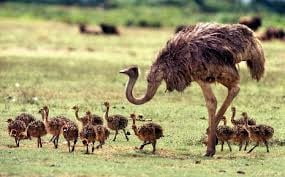
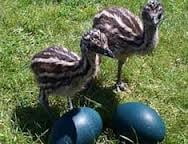
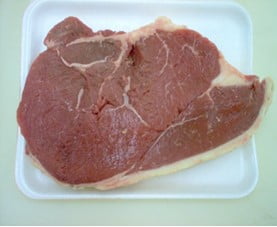
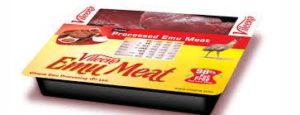
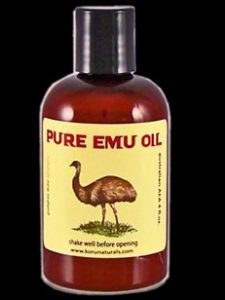
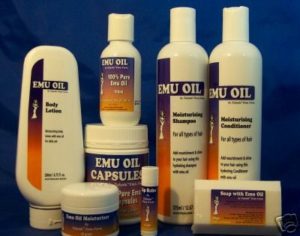
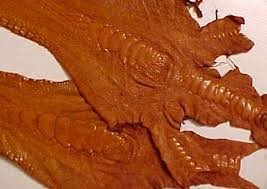
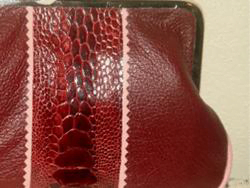
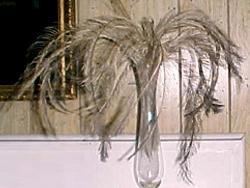
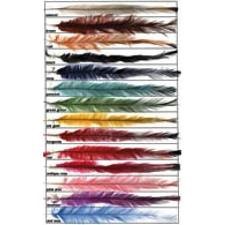
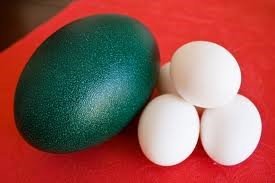
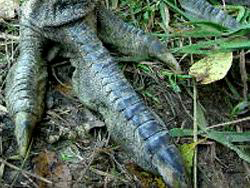
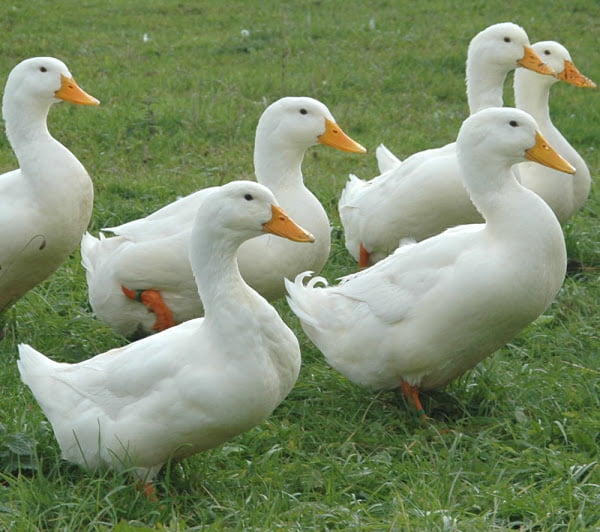
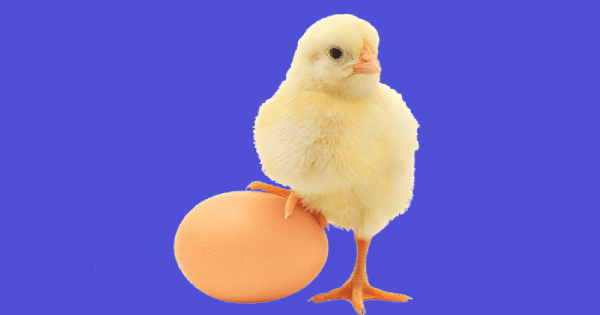
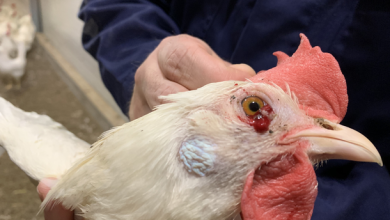
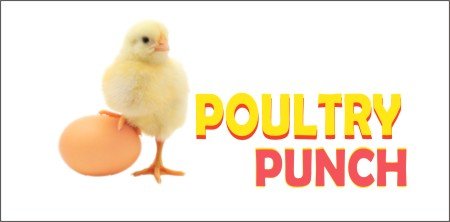

I want to congratulate you for Prospects of Emu Farming in India article.
If you have at least 10LBS to lose you’ll want to give this
a try: http://bit.ly/woman-lost-23-lbs-in-21-days
Life can be wonderful! 🙂 Kisses everyone!